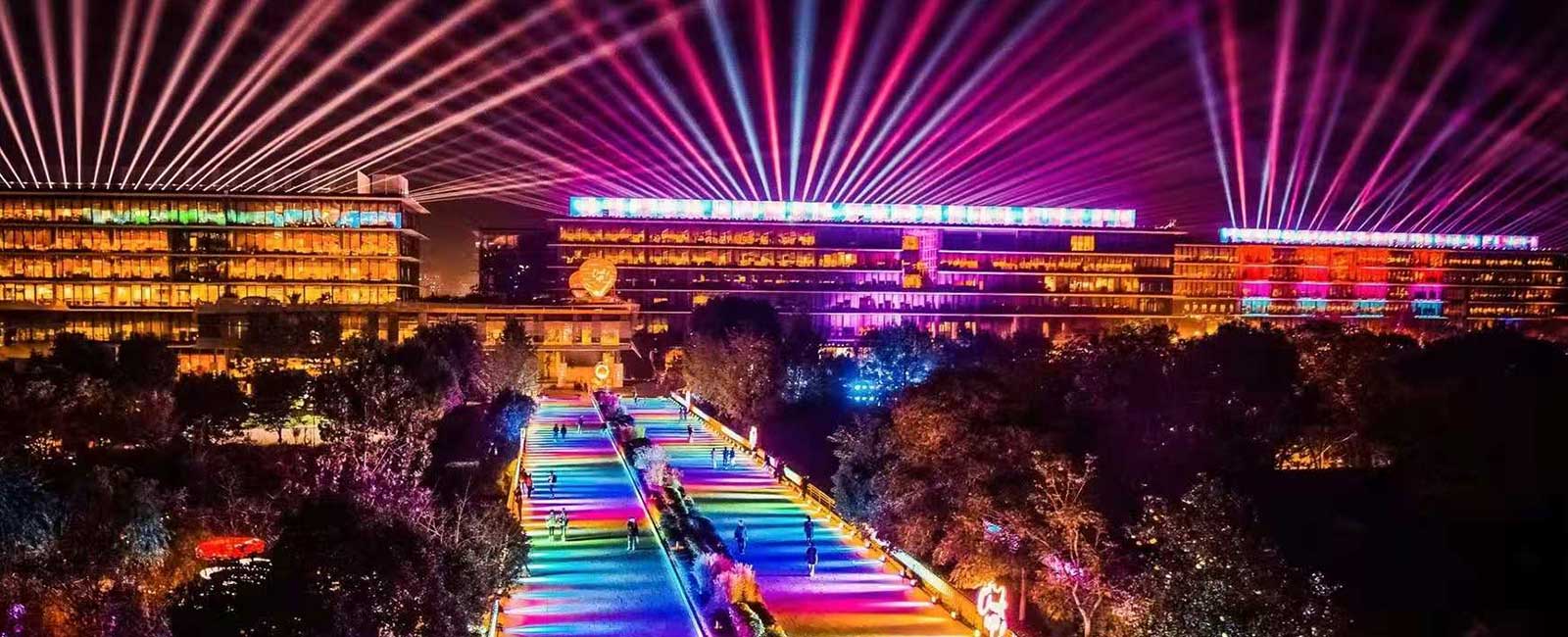Architecture
The DNA of LQE’s dynamic architectural lighting is deeply ingrained in performance and entertainment. With quality standards and cutting-edge technology from our entertainment lighting range, our architectural lighting consistently delivers creative versatility for permanent installations, both indoor and outdoor.
We’ve taken what we’ve learned from entertainment and architectural installations and created a comprehensive range of dynamic lighting to help you unleash your creativity and bring your designs to life.

LQE products are built for durability, reliability, and true permanent outdoor installations to ensure a long and productive service life. We are proud to design products in a responsible, sustainable manner to ensure a better future for future generations. Every product is designed with environmental responsibility in mind. Planning outdoor landscape cultural tourism solutions for stage lighting is a multi-faceted task that involves understanding the cultural site, its landscape, respecting its history, and highlighting its features using the right kind of lighting.

(photo from LQE project)
A. Understanding the Site
The first step in planning outdoor landscape solutions for stage lighting is to gain a comprehensive understanding of the cultural tourism site.
1. Historical & Cultural Significance
The historical or cultural significance of the site severely impacts the type of lighting used. – Certain cultural protocols may apply that dictate the style and intensity of lighting acceptable for the site.

(photo from LQE project)
2. Natural Geography
The geographical features of the site could affect the placement and type of lighting equipment needed. – For example, a site near a lake may require waterproof lighting solutions, while a hilly terrain might necessitate specialized equipment for installation.

(photo from LQE project)
B. Lighting Considerations
Once you’re familiar with the site and its characteristics, you start planning the lighting solutions.
1. Lighting Type
Different types of lighting are needed based on the impact you aim to achieve. – Direct lighting is often used to highlight specific areas, such as objects, paths, or stages. – Indirect lighting can create a more ambient experience, washing the entire site in soft light.
2. Lighting Fixtures
Outdoor lighting needs robust fixtures, designed to endure weather conditions without compromising their functionality. – Depending on the context, you might use pole-mounted fixtures for path lights or wall-mounted sconces for building facades.
3. Light Color and Temperature
The color and temperature of the light greatly influence the mood it creates. – Warm white light makes a site seem more inviting, while cool white light can add a modern touch.

C. Implementation
The implementation stage involves installing and setting up the lighting equipment and systems.
1. Installation of Equipment
Outdoor stage lighting for a cultural site requires professional installation. – The installation process involves setting up the fixtures, wiring them, and integrating them into a central control system.
2. Testing the Lighting
Once installation is complete, the system needs to be extensively tested. – This ensures that every element of the lighting plan gets executed correctly, and any issues can be addressed before it goes live.

D. Maintenance
Finally, proper maintenance practices should be put in place to ensure the longevity of the lighting setup.
1. Regular Inspection
Regular inspections can identify any potential issues or failures in the system before they become major problems.
2. Replacement Plans
Having a plan in place for quickly replacing faulty or old equipment can save you from unforeseen circumstances. In conclusion, planning outdoor landscape cultural tourism solutions for stage lighting involves understanding the site, selecting the appropriate lighting styles, fixtures, and colors, carefully implementing the plan, and maintaining the systems post-installation.












